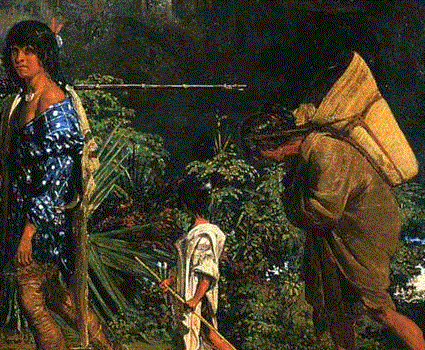Indian Removal Era Begins 1828-1849
1831-1833
First Choctaw forced removal causes death of thousands

The Choctaw are the first to sign a removal treaty, the Treaty of Dancing Rabbit Creek, under extreme duress and military threat. This is the first removal carried into effect under the Indian Removal Act. There are three removal periods, during which 17,000 Choctaw are removed, and thousands died of exposure, starvation, and disease, impacting generations after removal. They encounter a huge winter storm during the first removal, leading to death by exposure and starvation. Families are not allowed to gather belongings prior to leaving, and most are not dressed for winter conditions, making them vulnerable when a blizzard sets in. Rations are in short supply and strict rationing is imposed (Horn, p. 2). Thousands freeze to death or starve. (Green, 1995). When the wagons reach Little Rock, one of the Choctaw chiefs (thought to be Chief Harkins or Nitikechi) is quoted in the Arkansas Gazette as saying that the removal to that point has been a “trail of tears and death.” The “Trail of Tears” quotation is picked up by the press and used in subsequent publications and for future removals. About 6,000 Choctaw (nearly a third of the Choctaw Nation) die along the trail due to starvation, exposure, and disease on the more than 500-mile journey.